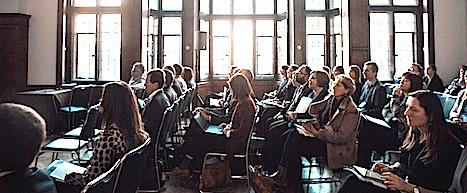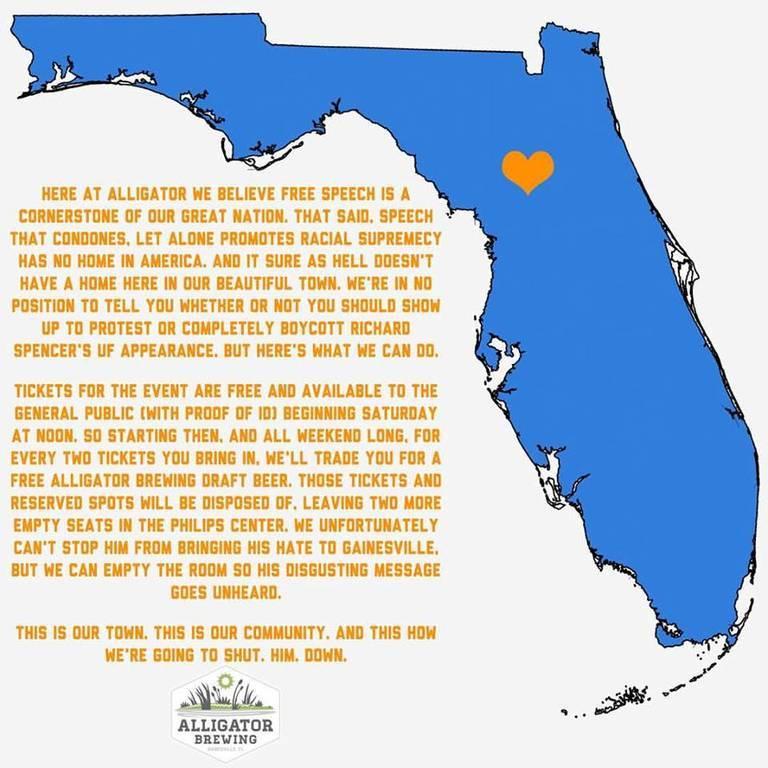What really matters when developing your strategy to tackling modern slavery


SEC Sues Mining Giant Rio Tinto for Fraud


This week, the U.S. Securities and Exchange Commission (SEC) accused the international mining company Rio Tinto and two former executives of fraud in a federal court in New York City. The SEC alleges Rio Tinto’s former chief executive officer and chief financial officer inflated the value of coal mines in Mozambique. The company acquired the assets in 2011 for $3.7 billion and in a textbook example of coal's rapid decline, Rio Tinto sold those coal holdings a few years later for $50 million.
According to the SEC, then-CEO Thomas Albanese and the company’s former CFO, Guy Elliott, failed to follow generally accepted accounting standards in valuing the Mozambique coal assets. As the project in the southeast African nation began to suffer one setback after another, the SEC claims Albanese and Elliott attempted to hide and delay disclosures related to the mines from key personnel of the company.
“As alleged in our complaint, Rio Tinto’s top executives allegedly breached their disclosure obligations and corporate duties by hiding from their board, auditor, and investors the crucial fact that a multi-billion dollar transaction was a failure,” said Stephanie Avakian, aco-director of the SEC’s enforcement division in a public statement.
The punitive measures the SEC is seeking include the return of allegedly ill-gotten funds plus interest and civil penalties from all the defendants The SEC also says it aims to bar Albanese and Elliott from ever serving again as public company officers or directors.
In a press release, Rio Tinto vigorously denied the SEC’s allegations. “Rio Tinto believes that the SEC case is unwarranted and that, when all the facts are considered by the court, or if necessary by a jury, the SEC’s claims will be rejected,” the company declared on Tuesday.
U.S. regulators are not alone in their investigation of Rio Tinto.
Across the pond, the United Kingdom’s financial watchdog, the Financial Conduct Authority (FCA), fined the company $36 million for breaking the country’s financial disclosure rules over the same Mozambique transaction.
FCA regulators charged that the company should have conducted an impairment test when financial reporting deadlines loomed back in 2012. But company executives decided generally accepted accounting rules lacked “clarity.” As the company discovered transporting coal to Mozambique’s coast would be costlier than previously believed, Rio Tinto ran some financial modeling that found the value of its coal assets plumetted to the point that they had a negative value. Nevertheless, the company decided to continue to value the coal mines at its acquisition price.
“Rio Tinto’s financial reporting was therefore inaccurate and misleading,” concluded the FCA.
The company, however, stated that the FCA’s regulators found no evidence of fraud after levying the fine and closing the case.
Rio Tinto’s entanglement with financial regulators is a setback in the company’s efforts over the years to position itself as one of the world’s more responsible companies in the global mining and extractives sector. In 2014, when its involvement in the Alaska Pebble Mine controversy festered, Rio Tinto pulled out of the project, and donated its shares to local non-profits. The company has also been heralded as an example of a corporate citizen as it had a reputation for investing in community and education projects worldwide, from Australia to Ghana.
But to the SEC, Rio Tinto is yet another company that suffers from lax corporate governance while it fudged the books at the expense of its investors. ““Rio Tinto and its top executives allegedly failed to come clean about an unsuccessful deal that was made under their watch. They tried to save their own careers at the expense of investors by hiding the truth,” said Steven Peikin of the SEC’s Enforcement Division.
Image credit: Bernard Jansen/Flickr
Midwest Braces For Climate Change Migrations North


For the third straight year, Illinois lost more residents in 2016 than any other state. But could climate change alter that trend? Chicagoans are talking about how much better the Midwest region seems since Hurricanes Harvey and Irma left such a devastating swath from Texas to the Atlantic coast.
A friend’s parents are reconsidering leaving Chicago to retire to Florida, and a neighbor’s family in Houston talked about moving the family hub north as they camped out in his Detroit guest room after Hurricane Harvey struck Houston. So, is a reverse migration to the Midwest out of the question?
Not at all. Even before these recent destructive storms, experts were contemplating that climate change could benefit the Chicago metro region. A March (2017) memo from the Chicago Metropolitan Agency for Planning staff to CMAP committees includes this possibility related to the region’s “On to 2050 Plan.” It said:
Potential economic opportunities may arise [in the Chicago metro region] from population growth and increased reinvestment, as residents and industries from areas more severely impacted by climate change impacts move to the region.
And our increasingly balmy winters may themselves reflect a changing climate. Research conducted by respected climate scientist Katherine Hayhoe, PhD., Chicago’s average temperatures have increased 2.6 degrees Fahrenheit since 1980, with the largest increases of almost 4 degrees occurring in winter.
With Midwest cities seeking ways to attract and retain top talent, grow their tax base, infill the city and retain big-city vibrancy, city and state leaders may want to make more of the area’s relative climate resilience. Especially since Americans already are on the move because of climate change.
Federal Emergency Management Administration data shows that in the past 17 years, over 1,000 communities in 40 cities have experienced managed retreat, largely due to flooding, permafrost melt and other climate-related changes. This managed retreat is a better option than forced flight. Over 20 percent of those who fled New Orleans and that region because of Hurricane Katrina never returned.
Of course, the Midwest isn’t free from changing climate conditions. Higher average temperatures that spark periods of extreme heat, heavy downpours and flooding will affect infrastructure, health, agriculture, forestry, transportation and air and water quality. But these are risks we can prepare for and mitigate against.
Important strides already have begun. Take air quality, which extreme heat makes worse and which Grist, a newsroom focusing on environment, contends is Illinois’ biggest climate worry. In the past several years, three factors have improved air quality in the state, maintains Respiratory Health Association’s Brian P. Urbaszewski, director of Environmental Health Programs:
- Major coal-fired power plants such as Fisk, Crawford, Joliet and Romeoville have been shut down. Some that remain, such as Cauveen, have added the latest technology scrubbers, reducing air pollutant loads by up to 99 percent.
- Federal rules on heavy duty on-road diesel engines require that any model year beyond 2007 meet particulate matter standards that are 90 percent tighter than before. The rule means that recent diesel trucks and buses emit one-tenth the soot than a 2005 model.
- Illinois’ Future Energy Jobs Act will increase cleaner energy, especially wind power, while requiring that utilities such as ComEd and Amren decrease electricity demand.
In addition, the Midwest possess pro-job, pro-innovation and pro-community choices to solve more. For instance:
- To continue to improve air quality, lawmakers and leaders can encourage the shift to higher fuel efficiency and battery powered private and public vehicles, including public buses.
- To improve stormwater management, the region can bring back the sponge function of the land by increasing the use of permeable paving, green roofs, tree planting, development of bioswales and disconnection of downspouts to prevent the overfilling of sewers.
- To decrease risk of illness from extreme heat, local governments can expand public awareness campaigns and emergency response plans that focus on communities with less air conditioning or with access to department stores and other cool places.
- To protect the agricultural industry from drought, farmers can enhance the soil, invest in water-efficient irrigation and seed varieties and consider what crops will flourish here as the climate changes.
Let’s start branding the Midwest as safe, secure and stable places from climate risk, making climate resilience a key feature of our pitch to young people, commercial enterprises and retirees.
Some Midwest cities such as Milwaukee already are grasping the potential rewards. Milwaukee is selling its water (from the same beautiful lake we get ours) as “the freshwater capital of the world,” cites former EPA Administrator Gina McCarthy, and has attracted over 200 water technology businesses in the region.
Coastal communities do not have many choices. Midwest cities do. One is to promote their resiliency while working diligently to improve it so they can be a welcoming host to climate migrants – and their bright minds, diverse backgrounds and tax dollars. As Mayor Emmanuel Prepares to host the North America Climate Summit, welcoming mayors from coasts and fire zones, he and his midwest peers demonstrate great climate resilience.
Joyce Coffee, LEED AP, is founder and president of Climate Resilience Consulting and has over 20 years of global experience applying resilience and sustainability strategies, management systems and performance measurement to climate-related issues.
Businesses Find Taking a Stand in Today’s Political Environment Is a Double-Edged Sword


Using politics as a means to promote one’s business can either be genius, or devolve into a social and financial minefield. But one of the most famous buildings in American political history, the Watergate Hotel, is having fun with its notoriety. Last year, after a major renovation and over four decades after a third-rate burglary ended up with the first and only U.S. president to resign from office, the Watergate’s new owners offer gleeful reminders of the building’s role in history. Hotel room key cards sport the moniker “no need to break in.” Pencils are inscribed with “I stole this from the Watergate Hotel.” Even the hotel’s switchboard references the date of the break-in, which occurred on June 17, 1972 (617-1972).
Recent events, however, are still very much raw to those on both sides of today’s divisive political issues. But that does not mean some businesses cannot have some fun - they just need to tread carefully.
Take the Bird, a bar in the Shaw neighborhood of Washington D.C. Anytime Donald Trump fires a high-level White House staffer, the Bird offers $4 happy hour specials. The joint was busy earlier this summer, with Anthony Scaramucci quickly dismissed, followed by Steve Bannon.
Other attempts to make light of political issues have backfired, however. Hennessey’s Tavern, in the Orange County town of Dana Point, wanted to spark a dialogue over the president’s plan to build a border wall. Unfortunately, the promotion, which involved having patrons climb an inflatable wall in order to score a “green card” good for a free drink, did not go over well with many customers and online social media commenters. Retorts ranged from “casual racism” to a “disgusting display of insensitivity.” The bar’s owner explained that was not his intent at all, but the overall reaction was highly negative.
Meanwhile, a bar in northern Florida took a stand on another explosive social issue and has been lauded as a hero.
Earlier this week, a bar in Gainesville attempted to counter white supremacist Richard Spencer’s visit to the University of Florida. All patrons had to do was score two tickets to Spencer’s speech on campus: if they showed up at Alligator Brewing instead of going to the event, the bar spotted them a free beer. “Speech that condones, let alone promotes racial supremacy has no home in America,” the bar posted on Instagram. The bar’s employees had a near-skirmish with an event organizer who caught on to this scheme and allegedly streamed live video accusing them of calling him slurs, but the tension soon abated. Alligator Brewing insisted that any protests related to Spencer’s appearance in Gainesville be peaceful and non-violent – and in the meantime, the bar scored many new fans.
Fans can prove to be fickle, however. For one business owner in western Massachusetts, the optics of appearing in a photo with President Trump have created a nightmare for him – along with a rapid plunge in sales.
Dave Ratner is the owner of Dave’s Soda and Pet City, which since the mid-1970s has sold those exact products: soda and pet food. Long active with the National Federation of Businesses, he was excited to learn that the Trump White House was supposedly going to make it easier for small businesses to purchase health insurance. Ratner became even more excited with the foundation asked him to represent the organization at a White House ceremony.
The problem is that Ratner ended up in the widely-circulated photo of the president signing the executive order that seeks to end subsidies for health care premiums under the Affordable Care Act, or Obamacare. Ratner claimed his appearance was a bait-and-switch, he did not know about the executive order signing, and bemoaned what he said was a political move that could actually hurt businesses like his with higher insurance costs.
But the backlash, which has been more than unfair, has also been relentless. Angry social media posts and angry calls to the stores have flooded channels, and Ratner claims he may even have to close some of his chain’s locations. He has since written an op-ed explaining his point of view of what happened and his insistence that he does not support Trump.
Ratner’s struggles can be attributed to bad luck and being used for political purposes. But for business owners who end up dabbling in politics as a means of promoting their companies, the four (some say seven) “P’s of marketing” apply. Especially place, positioning and people. Be sure you know your market well – or your market may quickly leave you and your business.
Image credit: Alligator Brewing Co/Instagram
5 Ingredients to Make Your Nonprofit-Corporate Partnership Succeed


By Jessica Scadron
A few days ago, I was strolling along the foggy coast in Northern California when I noticed a cormorant flying in “v” formation with a flock of pelicans. A week later, I saw a pelican flying with a flock of cormorants.
I’ve been watching these birds for years and never saw them co-mingle in a flight pattern. I always assumed the same types of birds fly together. It turns out these two species bond in the hunt for food because they can catch more if they work together.
It’s a great metaphor for a corporate-nonprofit partnership. Joining forces with organizations that have resources your organization doesn’t can yield exponential dividends.
As federal funding tightens and corporations take on a larger role in communities, these partnerships are becoming increasingly common — and successful.
“Whether it’s tackling the Muslim ban or protecting green spaces, nonprofits have products and services that many companies realize they need to create a healthy business environment, and to contribute to a world their stakeholders — employees, investors and customers — want to live in,” said Danielle Silber, director of strategic partnerships at American Civil Liberties Union.
Everyone benefits
Are you with a nonprofit that wants to innovate but doesn’t have the financial cushion to take risks? Maybe you work for a company that wants to deliver services on a small scale to low-income neighborhoods, but don’t have the local understanding to do so.
Each entity has its strengths. A corporation has resources and connections, and a nonprofit has an intimate understanding of a community or issue area. Combined, the company can build a positive reputation showing its support for a cause, and the nonprofit can focus on advancing its mission.
For example, to help solve the problem of children missing school because they don’t have clean clothes to wear, Whirlpool created Whirlpool Care Counts — an initiative to install washers and dryers in schools to see how attendance rates are impacted when students have clean clothes. The pilot program was so successful, with 93 percent of participating students’ attendance increasing in the first year, that Whirlpool is partnering with Teach for America to reach more students across the country.
The five practices of partnership
If you decide to embark on this kind of partnership, make sure you have senior management buy-in and ample resources to run it. Then, follow these five practices to increase your likelihood of success.
1. A shared vision: What is it that each of you are trying to accomplish? Companies often look to strengthen their brands with customers, shareholders and employees. A clearly articulated social mission helps them do that through their corporate social responsibility efforts. Nonprofits are laser-focused on their social missions such as alleviating poverty, curbing climate change, or providing healthcare, for example. Although companies and nonprofits have different reasons for partnering, both should agree on the partnership’s purpose and outcomes.
The the nonprofit's core purpose will determine the perfect intersection for a company and nonprofit to work together. If a healthcare company wants to provide discounted services to low-income neighborhoods, the obvious partner for them is an organization whose mission is to do the same.
Look at Unilever’s partnership with Domestos and UNICEF to deliver clean, safe toilets to millions who don’t have them. In just three years, 6.2 million people received access, helping all three organizations meet their water, sanitation, hygiene and sales goals.
2. Define the partnership: Articulate the division of labor from the outset. Make sure each organization knows who is responsible for what, how decisions will be made, and which organization will lead the project. Appointing individuals will insure each side fulfills their commitments and keeps the train moving.
“Partnership terms are negotiated like any other contract,” said Cheryl Damian, senior vice president of Ketchum Social Purpose. “Not only does it drive accountability, it provides a clear understanding of roles and expectations. Many times it is during this process that organizations unearth hidden gems in terms of assets and expertise that can make the partnership more efficient and productive.”
3. Monitor and evaluate: Measuring progress is often the Achilles heel of any organization. Layer that with figuring out how to align metrics between disparate entities and the climb can seem steep.
Companies and nonprofits have different approaches to metrics. But measurement is critical to the success of the project in order to quickly build on what works, learn from what doesn’t, and keep momentum. A lexicon both partners can agree to, and realistically fulfill, will prevent mission stagnation.
In 2012, Warner Bros. and DC Entertainment (WB) created the We Can Be Heroes campaign to raise funds and awareness for the worst hunger crisis in the Horn of Africa since the ‘90s. Thirteen million people were displaced, and WB wanted to help. So they partnered with International Rescue Committee, MercyCorps, and Save the Children — three organizations equipped to deliver expedient aid to those devastated by the drought. All entities agreed that the best metrics for measuring the campaign’s success were how many people received aid and amount of funds raised. WB hit the two-year campaign goals within six months.
4. Communicate: Like a good marriage, your partnership requires nurturing to be fruitful. Don’t be shy about shaking out the rug if decision-making stalls or the partnership takes a wrong turn. Open dialogue will strengthen your collaboration and lead to better outcomes. So will establishing processes for communicating with your partner, and your internal team. Create a project work plan, schedule weekly check-in calls, and consider using technology like Slack or a project management tool like Teamwork to make collaboration easier.
And don’t forget to communicate partnership successes both internally and externally. Doing so will build excitement for the project throughout both organizations.
5. Flexibility: Remember, each organization has its own culture. Organizations evolve and grow — so must the partnership if you want to have a positive experience. Handle conflict when it arises, and be accommodating.
Creating a partnership can be challenging, but the effort is worth it for organizations and the communities they serve. It doesn’t have to be overwhelming if you take things step by step. If you’re considering a partnership, or are in the midst of one you’d like to reinvigorate, apply these five elements and you’re likely to cultivate strong results.
Jessica Scadron is the founder of Social Harmony, a communications firm that provides strategy and implementation to organizations changing the world. Find her on LinkedIn, Twitter and email.
It Turns Out Men and Women View CSR Quite Differently


According to Virginia-based CFA Institute, a non-profit that advocates for the highest possible ethics standards in the investment advisory profession, its membership’s view of corporate social responsibility is still evolving. Worldwide, the portfolio managers and research analysts who participated in this year’s survey are taking environmental, social and governance (ESG) concerns more seriously compared to a similar survey the organization conducted in 2015.
Overall, almost three-quarters of the almost 1,600 survey respondents say they take CSR-related issues into account when making investment decisions. And among those who don't, two-thirds said they would if there were more client demand.
But the CFA Institute noticed a Mars-Venus divide between how men and women in this profession view the value of CSR. Almost half, or 46 percent of the men surveyed, believed these issues were immaterial and offered any added value to their investment decisions, compared to only 18 percent of the women who participated in the study. And twice as many men as women were unsure if the consideration of CSR issues were consistent with their fiduciary duties.
A larger issue that faces the industry, however, is the lack of demand for such information from investors in the first place. Almost half of both men and women surveyed reported that clients are simply not bringing up these questions. That revelation comes despite a watershed year in the investment community as more shareholders have voted to push companies to take more action on issues including disclosures related to climate change risks – ExxonMobil, of course, being the most headline-generating example.
Meanwhile, more investment management companies, such as Vanguard, are nudging the companies in which they own shares to ramp up their disclosures on how climate change could potentially have an impact on their long-term business performance.
Awareness, however, explains a large part of the inertia that is still ongoing within the wider investment management sector. Access to CSR education and training overall is still rare. The CFA Institute survey showed that only about one-third of respondents said their companies’ employees received any kind of CSR training. The upside, however, is that 75 percent of respondents said they are open to having employees at their companies receive education on CSR issues.
While 61 percent of the survey’s participants agreed that companies should be more straightforward in reporting on various sustainability-related indicators, corporate governance still reigns supreme as this industry’s most pressing concern. Board accountability, said 77 percent of those surveyed, was still the most prominent issue affecting financial markets. The next largest concern was human capital, at 65 percent. But environmental issues are still on the radar of many within this segment of the financial industry, as 62 percent affirmed that environmental degradation is an ongoing issue.
Image credit: Anthony Quintano/Flickr
It’s Time to Invest in Negative Carbon


By Logan Yonavjak
With wildfires raging in Northern California during this year’s SOCAP conference, the need to invest in more resilient land management practices is critical. The question is: How do we manage our land in a way that can not only buffer events like this in the future, but also help us turn the tide on global warming?
A conference panel entitled, “Forget Net Zero: It’s Time to Invest in Negative Carbon,” highlighted several solutions – with representatives from a real assets investment company, a cattle ranch, and a community-development bank.
While the urgency of global warming demands that we rapidly reduce emissions and transition to a clean energy economy, we now know that we will not effectively turn the tide if we also don’t employ strategies that result in negative emissions – strategies that actually sequester carbon for a significant length of time.
In a recent paper in Nature, scientists agreed that large amounts of carbon may need to be removed from the atmosphere (aka “negative emissions”) in order to keep global warming below 2 degrees Celsius. In other words, slowing emissions is not enough.
But how can investing in land possibly get us there?
Citing recent research in Paul Hawken’s Project Drawdown, if we transform our forest and farm systems globally through regenerative agriculture and managed grazing practices, as well as restore temperate forests, we can sequester over 62 Gigatons (or 562 billion metric tons of CO2e) of carbon by 2050 – which is equivalent to around 6 percent of what is necessary for the atmospheric reduction needed to maintain global average temperatures below 2 degrees Celsius.
Forests of the West, as defined by the U.S. Forest Service as 6 western states (WA, CA, ID, OR, NV, and UT) store over 30 billion metric tons of CO2e, and contribute to reducing ~14 percent of the country’s emissions – they are effectively the single largest source of negative emissions in the country.
Ecotrust Forest Management (EFM) is already taking steps to achieve negative emissions with forests in the western U.S. EFM is a B Corp certified, real asset investment company that creates compelling investment opportunities at the intersection of working landscapes, conservation, and rural economic development in the western U.S.
Since 2004, EFM has transitioned over 75,000 acres of forestland via FSC-certified, climate-smart forestry across Oregon, California and Washington. These forests store 5 million metric tons of CO2e. While currently involving only a small fraction of the total capacity of western U.S. forests, their model can be replicated to create other opportunities for net-zero climate investing in land.
“Instead of investing in expensive and often risky carbon storage technologies we can, and must rely on soil, forests, coastal wetlands and green buildings to sequester carbon,” says Bettina von Hagen, Founder & CEO of EFM.
EFM and others argue that we can transform the climate crisis into an incredible area of opportunity for the western U.S., and other regions that employ this strategy. In the west, there are natural systems that are among the most productive in the world from a carbon perspective, giving the region a natural competitive advantage.
But it’s not just about carbon. Investing in real assets, diversifying revenue from the land-base and re-tooling associated processing infrastructure also gives us an opportunity to rebuild communities with social equity in mind. People not traditionally part of the climate change conversation, including foresters, fisherman, farmers, ranchers, and bankers can play a role in this new economic paradigm.
Last but not least, investing using these strategies helps to shift the power base and restore agency to many disempowered communities, which can empower those who are best equipped to care for the land.
So, what needs to be done?
EFM argues that we are grossly underutilizing the capacity of western forests to store carbon. In Oregon, for instance, trees are harvested every 35-40 years, while they can continue to grow at very high rates well into 100 years.
“Oregon could become a negative emissions state through forest policy and monetary incentives to forestland owners to increase rotation ages and reduce harvest intensities,” says Amrita Vatsal, Managing Director at EFM. “This needs to be done in parallel with investments that support job creation via restoration thinning, habitat creation, fuels treatments, processing infrastructure for small-diameter wood, innovations in tall-wood buildings that create new uses for wood and enterprise creation in rural communities.”
The public land base is an important piece of the puzzle as well. The challenges here are different – with overly dense stands, tree mortality, and wildfires contributing to significant carbon losses. Creating new markets for small-diameter logs that are a product of thinning, and retooling mills to accept these logs will be necessary to sustain wood-flow and support regional wood-based economies.
Together, we can invest in the future health of our public and private lands to build a more climate resilient future.
Image credit: Ecotrust Forest Management (EFM)
Catalytic Converter Demand Pushes Price of Palladium Over $1,000 an Ounce


According to Bloomberg, the price of palladium briefly surged to $1,005 an ounce earlier this week, marking the first time the rare, silvery white metal hit the $1,000 mark since 2001. The metal’s price has since settled at $987 an ounce as of press time, but as the Financial Times noted, the price of palladium has tripled over the past six months, and has surpassed the price of another rare metal, platinum.
The main reason for this price surge, explain many industry analysts, is that demand for palladium is being driven by the automotive industry, which covets palladium for its effectiveness in catalytic converters – the exhaust emission control devices in cars that turn toxic gases into less harmful pollutants.
In recent years, there has been a huge interest in elements that are either rare or difficult to source, such as lithium, cobalt, neodymium and dysprosium – but that interest has been because of the rise of the electric car and innovations in battery technology, which currently requires rare earth metals. Investors’ mania over the assumption all-electric cars will become the transportation of the future has led to the surge in prices for these materials. Such speculation has been behind the resurgent interest in California’s Mountain Pass mine, the only major deposits of rare earch metals in the U.S.
Of course, as is the case with any commodity, these metals' prices often appear as a roller coaster on a linear chart. Earlier this decade, as China restricted their exports, their prices spiked (which was a subplot of Netflix’s series, House of Cards, a few seasons ago). But within a few years, those prices declined as manufacturers either found ways to use less of these elements or found substitutes.
“The road to a promised land of zero-emission vehicles is littered with speed bumps and red lights that threaten to seriously slow the progress of the electric car,” said Karl West of the Guardian as he outlined the challenges manufacturers face as they seek materials that often pose logistical, ethical and political challenges.
Meanwhile, future projections of how many electric vehicles (EVs) will be on the globe’s roads are all over the map. Bloomberg New Energy Finance (BNEF), for example, has estimated that EVs will comprise a majority of all new car sales before 2040, and also concluded that they could become cheaper than internal combustion engine (ICE) cars in most countries by 2029.
As Stephen Lacey of GreenTech Media pointed out earlier this summer, just about every international organization or transportation association has been revising their EV projections to higher numbers – well, everyone except the automakers. Meanwhile, auto manufacturers such as Volvo say they are accelerating the rollout of EVs; some governments, such as those of the United Kingdom and France, say they will phase out ICE cars altogether in the long run.
Nevertheless, there has been a twist within the wider automobile sector along the way. As EVs still comprise a minuscule amount of automobile sales worldwide, ICE cars are still being sold at a steady pace. Yet automakers feel the pressure to ensure their cars are less polluting as governments pass stricter regulations and consumers seek cleaner-burning cars. “So before electric cars sweep across the world’s roads, [palladium] is in high demand as car manufacturers look for other ways to cut the emissions from their fleets,” wrote Eshe Nelson for Quartz earlier this week.
Meanwhile, after being discouraged by the high price of platinum for years, automakers and their suppliers may start turning to that metal for use in catalytic converters, as its pricing forecasts suggest they will remain lower than that of palladium in the near future.
Image credit: James St. John/Flickr
Canadian B Corps Stand Against Hate and Discrimination in the Workplace


By Melissa Schweyer
Gone are the days when responsibility for protecting people's rights and liberties lay solely with governmental bodies. Society’s approach to combating negative ideologies is undergoing a transition, with businesses and major corporations playing a larger role in mitigating inequalities and injustices.
Fortunately, there’s a growing number of businesses taking on the challenge, including several Canadian B Corporations, who use their platform to eradicate hate and discrimination in their workplaces, their communities and the world, more broadly.
Here are four Canadian B Corps taking a stand against discrimination and hate in their own unique ways.
Kent Employment Law
Kent Employment Law works hard to provide sound advice to other businesses looking to make their workplaces more inclusive and diverse.
Trevor Thomas, a lawyer with Kent Employment Law, notes that externally, the law firm speaks to clients about the human rights code and how to protect the rights of employees.
As Thomas puts it, “we all share similar values with our stakeholders.” This is one reason why the firm is dedicated to putting their own advice into action, internally. The team is currently drafting a diversity and inclusivity policy with a committee that addresses any issues that may arise at the firm.
Understanding that the firm doesn’t always have all of the answers, it leans on the B Corp community, adopting best practices from others that are implementing inclusive hiring practices.
For instance, the firm has recently initiated a new hiring procedure, whereby applications are vetted through at least two or three employees. The first employee is responsible for censoring all indications of an individuals’ gender, sex, ethnicity, race, etc., by removing all potential indicators from each application. Thomas mentions that practices such as these help facilitate an inclusive work environment.
Thomas adamantly notes that, “As a firm and as individuals, we value tolerance, equality, understanding and respect. We believe in the rights of individuals to be free from discrimination, as manifested in Canada's human rights laws. Kent Employment Law is proud to stand with our fellow B Corps as we champion diversity and inclusion.”
Lucky Iron Fish
Lucky Iron Fish is a Canadian social enterprise and B Corp that manufacturers little iron shaped fish that are to be used while cooking, combating iron deficiencies for people in Cambodia, North America and across the world.
Founder and CEO of Lucky Iron Fish, Gavin Armstrong, had this to say about inclusiveness and diversity:
As a social enterprise and a B-Corp Lucky Iron Fish Enterprise (LIFE) strives to embed positive social impact into everything that we do. When it comes to our team we promote transparency, diversity and equality.Our hiring practices and employment policy follow diversity and inclusion standards reflecting out commitment to the elimination of employment-related barriers which may inhibit the recruitment and retention of women, persons with disabilities and members of visible minorities […] An employee will have the right to be considered for employment based on their individual ability and achievement as the prime criterion.
Beyond ensuring an inclusive hiring practice, Lucky Iron Fish also engages in community initiatives, sponsoring the LGBTQ+ pride celebrations in Phnom Penh, Cambodia, and Guelph, Ontario, Canada.
As Armstrong puts it, “Fundamentally we believe that no one should be treated differently and that everyone deserves the ability to live healthier lives.”
Beau's All Natural Brewing
Well known for their large and uniquely-designed beer bottles, employee-owned craft brewery Beau’s All Natural Brewing Company makes a considerable effort to create an inclusive workplace and community.
Jennifer Beauchesne, Beau’s “not-so-corporate” communications point person, states that “Our hiring and purchasing policies are geared to ensure diversity and equality.”
In addition to procedures and policies, Beau’s has also launched and funded a scholarship at Niagara Brewing College, specifically geared to applicants who experience diversity challenges in relation to their career path.
The brewery awards three $1,000 and one $2,000 scholarships annually to students enrolled in the Brewmaster and Brewery Operations Management program at Niagara College. To apply, students must complete a one-page response, answering the question: “What cultural, gender or health obstacles and opportunities are you working with as you pursue academic and career success in this field?”
Benevity
Benevity is a Canadian B Corp that provides online workplace giving, volunteering and grant management programs to companies across the world. With more than 2 million users globally, Benevity processes enough donations annually to benefit over 100,000 global charities.
I had the chance to chat with Bryan de Lottinville, Founder and Chief Executive Officer at Benevity, Inc. about what the company is doing to promote and ensure inclusion and equality, both in the workplace and in society, as a whole.
Though Benevity hasn’t taken a public stance on the recent rallies that had been led by white supremacist and alt-right groups, the B Corp firmly stands against hate, inequality and racism.
Mr. de Lottinville notes that the rallies have sparked important discussion within the company, particularly around the silver lining these rallies manifest and how many of Benevity’s clients have found a catalyst to move from an agnostic state of being to an active state of change-making.
With regards to policies, de Lottinville is quick to mention the company’s philosophy of instilling principles and values over rules. Though Benevity doesn’t really have any policies about inclusion or diversity, they do have a manifesto and a set of core values that, de Lottinville believes, creates authenticity with real outcomes.
“If you want a company that’s pro-social, it needs to be infused, not forced,” states de Lottinville.
He furthers his point by stating that senior management needs to be aligned with a company’s values, otherwise, “…those 3-inch handbooks just create compliance, not empowerment.” Candidly, de Lottinville uses an analogy to drive home his message: “I bet Uber has a policy. But its not about that. It’s about culture.”
Finding the silver lining within the American political context, de Lottinville expresses that “we are raising the consciousness level of issues that have floated under the radar for a long time.”
De Lottinville notes that with this raised level of consciousness, Benevity’s staff members are genuinely excited about what the next couple of years will bring with a growing appetite from business to make an impact on society.
Whether it’s policy, culture, a mix of the two, or direct implementation and programming, it’s imperative that businesses step up to challenges governments can’t or won’t eradicate on their own. Time will tell how companies will navigate through the future world of business with a heightened level of consciousness, onus and opportunity.
Insurer Takes a (Lemonade) Stand on Gun Ownership


Lemonade, the home and renters’ insurance company that allows customers to buy policies and submit claims via a smartphone app and artificial intelligence, has announced a change to its coverage plans. And at a time when more brands are taking stands, the New York-based company’s decision appears to be far from popular with its announcement that it would cap reimbursement for the damage or theft of any firearms to $2,500.
“If you own more than $2,500-worth of firearms, we recommend trying one of our competitors. They seem to all offer additional coverage. We don’t.” the company’s co-founder Daniel Schreiber said in a blog post earlier this week.
The change in policy did not win the company many fans on MOnday - at least based on the company’s Facebook post explaining this decision. Responses were all over the map, from the usual “commie” and “liberal” comments to F-bombs and screams about the Second Amendment. One user asked why the company would insure guns at all. “$2,500 can buy five Glocks - enough for a massive shooting spree!” that commenter chimed in.
But in fairness to Lemonade, much of the negativity over this policy change devolved into name-calling and strawman arguments. One respondent sarcastically barked, “Congratulations on labeling tens of millions as ‘dangerous,’” when the company said nothing of the kind in its announcements, nor on social media.
Lemonade’s business model aims to disrupt the virtual market by replacing insurance brokers with artificial intelligence and chat bots. The company claims that its relatively low flat fees eliminate the annoying deductibles and rate hikes that have long made consumers leery of the U.S. insurance industry. Theoretically, this means the company’s customers could file a claim for something as small as a set of headphones, or an item more valuable like a gun. Lemonade also differentiates itself by operating in-part as a social enterprise – the company says it donates leftover revenues after claims and operating expenses to various causes.
And many insurance companies, including Allstate, often treat firearms as scheduled personal property – high-value items like rare coins, jewelry and expensive cameras. Lemonade’s policies did not require such add-ons, but starting this week, any loss of guns can only score a reimbursement of up to $2,500. Hence a few users sniffed at this announcement, arguing it was nothing new. “Most HO [homeowner] policies put a limit on firearms - this is just marketing,” one commenter said on Lemonade’s Facebook page.
Nevertheless, in the fallout after the mass shooting in Las Vegas earlier this month, Lemonade’s founders believed it was up to them to take a stand. The company certainly will lose some customers and prospects – and at the same time, it could very well score others. What this young company’s stance does demonstrate that in today’s political climate, companies will increasingly feel pressured to align one way or another on some of society’s more divisive issues. We have already been experiencing this trend in wake of the violence in Charlottesville this summer, with companies as diverse as Campbell’s Soup Company and Airbnb concluding they had to take action.
The old rules of business dictated that companies had to do everything they could to dodge politics. But the new normal for companies now is that vacillating on an issue is riskier than taking a stand.
Image credit: Vitaly V. Kuzmin/Wiki Commons